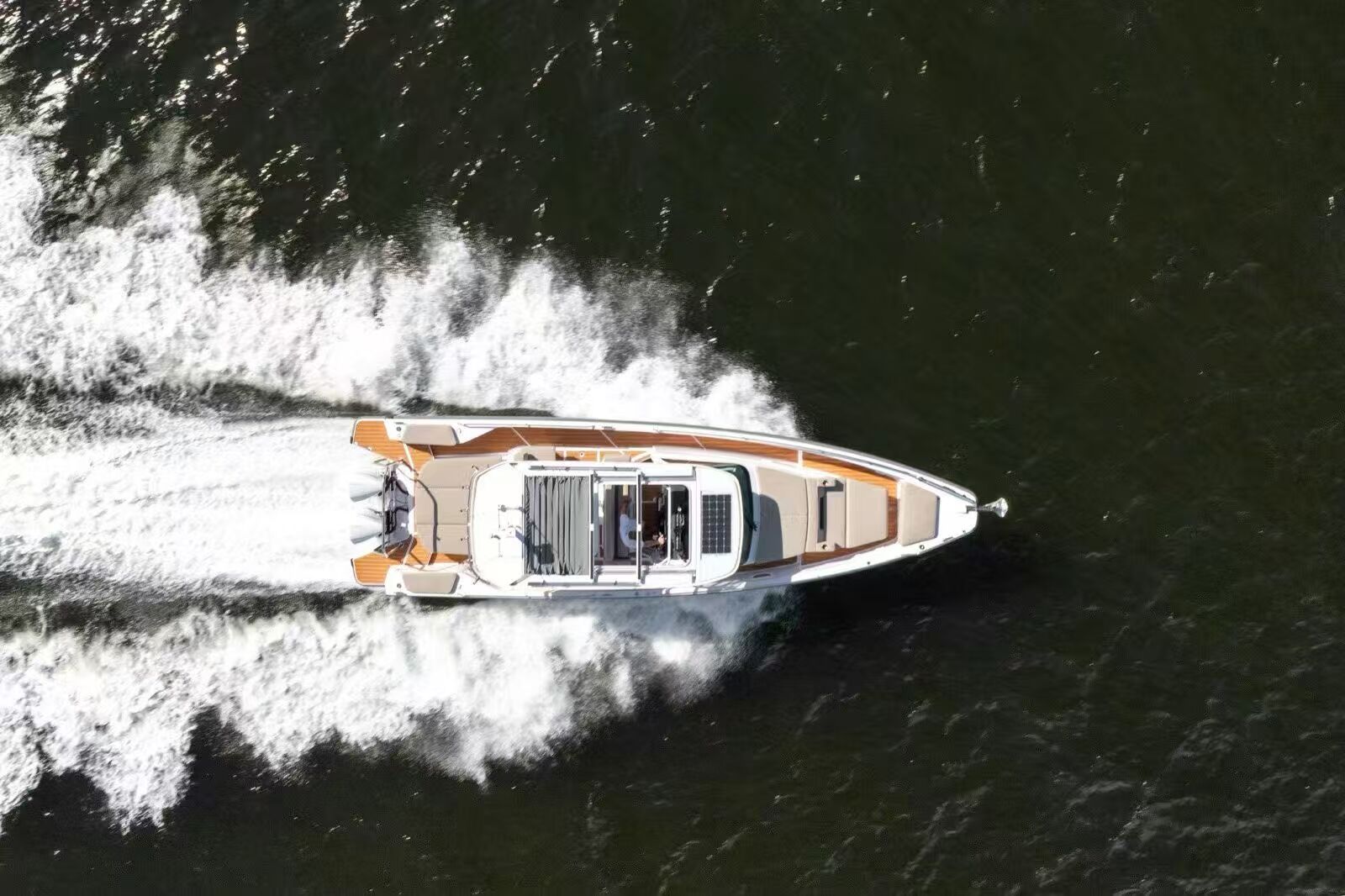Розуміння впливу якісної морської підлоги на експлуатаційні характеристики судна
Основа будь-якого морехідного судна лежить буквально під вашими ногами. Встановлення палубного покриття — це більше, ніж просто естетичний вибір: це важлива складова, яка безпосередньо впливає на безпеку, комфорт і загальний термін служби вашого судна. Правильно встановлене професіоналами морське покриття створює захисний бар'єр між пасажирами та основою судна, водночас підвищуючи його конструктивну міцність і вартість.
Багато власників човнів недооцінюють складність і технічну кваліфікацію, необхідну для правильного монтажу палубного покриття. На відміну від напольних покриттів у житлових приміщеннях, морські умови створюють унікальні виклики, що вимагають спеціалізованих знань, точних методів і матеріалів морського класу. Професійне встановлення гарантує належне врахування цих ключових елементів, потенційно економлячи тисячі доларів на майбутніх ремонтах і забезпечуючи оптимальну роботу судна.
Основні компоненти професійних систем морського палубного покриття
Передові матеріали та їх застосування
Професійне встановлення палубного покриття розпочинається з вибору відповідних матеріалів, розроблених спеціально для морського використання. Сучасні варіанти палубного покриття включають синтетичний тик, вінілові композити та спеціалізовані морські килими. Кожен матеріал проходить ретельне тестування, щоб забезпечити його стійкість до жорстких морських умов, ультрафіолетового випромінювання та постійного вологого середовища.
Наприклад, синтетичний тик надає класичний вигляд традиційного тику, водночас забезпечуючи вищу довговічність і мінімальні вимоги до обслуговування. Професійні монтажники добре знають специфічні вимоги щодо застосування кожного типу матеріалу, забезпечуючи правильне приклеювання та тривалий термін експлуатації в морських умовах.
Конструктивні аспекти та підготовка основи підлоги
Перш ніж розпочати будь-яке встановлення палубного покриття, професійні монтажники ретельно перевіряють існуючу основу та конструктивні елементи. Цей важливий крок передбачає перевірку на наявність пошкодження водою, дослідження цілісності нижчої конструкції та усунення будь-яких проблем, які можуть погіршити нову систему підлоги.
Команди професійного монтажу використовують фанеру морського ґатунку та спеціальні бар'єри проти вологи, щоб створити міцну основу. Ці матеріали спеціально підібрані завдяки їхній стійкості до гниття, деформації та деградації в морських умовах, забезпечуючи довготривалу стабільність і захист.
Технічні аспекти професійного монтажу
Точне вимірювання та індивідуальне підганяння
Професійне встановлення підлоги на човні вимагає точних вимірювань і прецизійного розрізання матеріалу, щоб забезпечити правильне прилягання до унікальних контурів судна. Експерти використовують спеціалізовані інструменти та шаблони для врахування складних вигинів, кутів і перешкод, які зазвичай зустрічаються в плануванні човнів. Такий уважний підхід запобігає утворенню зазорів, підняттям країв і потенційним точкам проникнення води.
Процес встановлення передбачає ретельне планування з урахуванням корпусних фітингів, відсіків для зберігання та інших особливостей конструкції човна. Професійні монтажники знають, як правильно герметизувати ці зони, зберігаючи легкий доступ для обслуговування та забезпечуючи водонепроникність.
Просунуті методи встановлення
Професійні монтажники використовують спеціалізовані методи, розроблені спеціально для морських застосувань. Це включає правильний підбір клею та методи нанесення, які враховують коливання температури та вологість. Процес установки часто передбачає кілька шарів захисту, у тому числі бар'єри від вологи та спеціальні герметики.
Під час процесу встановлення підлоги на човті інтегруються належні системи вентиляції, щоб запобігти накопиченню вологи під поверхнею. Така увага до деталей допомагає запобігти утворенню плісняви та подовжує термін служби як самої підлоги, так і основної конструкції.
Особливості безпеки та стандартні норми
Технології протидії ковзання
У професійних установках використовуються сучасні технології протидзення, необхідні для морської безпеки. Ці покриття ретельно підбираються залежно від призначення судна — для рибальства, сімейного відпочинку чи комерційного використання. Процес монтажу забезпечує рівномірне нанесення протидзенних покриттів та правильну інтеграцію з загальною системою підлоги.
Сучасні матеріали для морських підлог мають вбудовані текстурні малюнки та спеціальні покриття, які зберігають гризькість навіть у мокрому стані. Досвідчені монтажники знають, як оптимізувати ці функції безпеки, зберігаючи естетичний вигляд і комфорт.
Дотримання регуляторних норм та безпечних стандартів
Монтаж підлоги на човнах має відповідати різним нормам морської безпеки та галузевим стандартам. Сертифіковані монтажники постійно оновлюють свої знання щодо цих вимог, забезпечуючи, щоб усі матеріали та методи монтажу відповідали або перевищували вимоги безпеки. Це включає правильну обробку країв, монтаж порогів та врахування доступу в аварійних ситуаціях.
Документальне підтвердження відповідності та правильних методів встановлення надає цінний захист власникам човнів, потенційно впливаючи на страхове покриття та вартість перепродажу. Професійне встановлення часто супроводжується гарантіями, які захищають від проблем, пов’язаних з монтажем.
Довгострокові переваги та аспекти технічного обслуговування
Повільна тривалість і продуктивність
Якщо монтаж напольних покриттів на човнах виконується професіоналами, це значно подовжує термін експлуатації як самої системи підлоги, так і самого судна. Правильні методи встановлення запобігають проникненню води та пошкодженню конструкції, тоді як якісні матеріали стійкі до зносу від інтенсивного руху та впливу морських умов.
Професійне встановлення часто передбачає додаткові захисні заходи, такі як покриття, стійкі до УФ-випромінювання, та спеціальні обробки країв, що допомагає зберегти зовнішній вигляд і функціональність з часом. Ці деталі сприяють зменшенню потреб у технічному обслуговуванні та зниженню довгострокових витрат на експлуатацію.
Протоколи технічного обслуговування та вимоги до догляду
Професійні монтажники надають детальні рекомендації щодо обслуговування, які стосуються конкретно встановленої системи підлоги. Ці інструкції допомагають власникам захистити свої інвестиції та забезпечити оптимальну продуктивність. Правильні процедури догляду розроблені для запобігання поширеним проблемам і подовження терміну служби підлоги.
Регулярне обслуговування стає простішим, коли підлогу встановлено професійно, оскільки правильні методи герметизації та оздоблення роблять прибирання та догляд ефективнішими. Це економить час і ресурси, зберігаючи зовнішній вигляд і функціональність підлоги.
Поширені запитання
Скільки часу зазвичай триває професійне встановлення підлоги на човні?
Тривалість професійного монтажу підлоги на човні залежить від розміру судна та складності робіт і зазвичай становить від 2 до 5 днів. Цей період включає належну підготовку, встановлення та час для затвердіння матеріалу, щоб забезпечити оптимальний результат.
Що відрізняє суднову підлогу від звичайних напольних матеріалів?
Матеріали для палубного покриття морського класу спеціально розроблені, щоб витримувати постійний вплив вологи, солоної води, ультрафіолетового випромінювання та різких коливань температури. Вони містять спеціальні сполуки та обробки, які запобігають деградації в морському середовищі, зберігаючи при цьому безпечність і естетичні властивості.
Яка гарантія зазвичай передбачена для професійного монтажу?
Професійний монтаж палубного покриття для човнів зазвичай передбачає комплексну гарантію терміном від 5 до 10 років, залежно від матеріалів і виконавця. Зазвичай гарантія поширюється на дефекти матеріалів і якості виконання робіт, забезпечуючи впевненість власникам човнів.
Зміст
- Розуміння впливу якісної морської підлоги на експлуатаційні характеристики судна
- Основні компоненти професійних систем морського палубного покриття
- Технічні аспекти професійного монтажу
- Особливості безпеки та стандартні норми
- Довгострокові переваги та аспекти технічного обслуговування
- Поширені запитання





